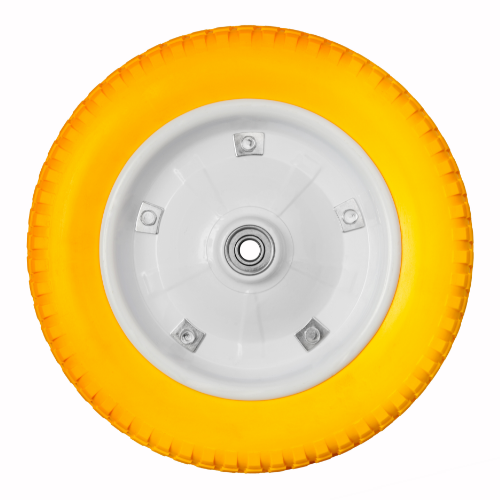Solid or foam-filled? Consider this.
According to Construction Equipment:
Puncture-proof tires, either solid or foam-filled, are popular items on rental machines and machines used in hostile environments, such as demolition, landfills, and quarries. Solid tires sometimes are chosen for use in less-severe applications, however, simply because they last longer.
“Service life is definitely best with a solid tire,” says Seth Walters, manager, special product programs, Alliance Tires Americas. “Foam prevents flats from punctures, preventing down time from acute failures, but foam will not necessarily increase tire life. The best way to think of it is that foam-filling a pneumatic tire is like buying insurance against puncture flats. A solid tire comes with that puncture insurance for free, but also includes improved tire life because of the special severe-duty compound and tread. We’ve seen service life doubled or tripled with solid tires.”
On the other hand, says Dean Hill, general manager, Cy-Fair Tire, Houston, Texas, the operator’s probably going to like the “poly-fill” better, because it provides a more comfortable ride. Tire-fill materials vary in type and durometer (hardness), he says, and the selection is often based on balancing comfort versus durability in the application.
Comparing the relative costs of solid and foam-filled tires is difficult, says Walters, because the volume of the tire can be a significant factor in foam filling.
“That said,” says Walters, “if a pneumatic tires costs $100, a foam-filled would total $175 to $250, and a solid would cost $250 to $300. Any wheel exchange [perhaps required for the solid] would be an additional expense. Of course, the point of investing in a tougher tire is getting more tire life and productivity from it.”

